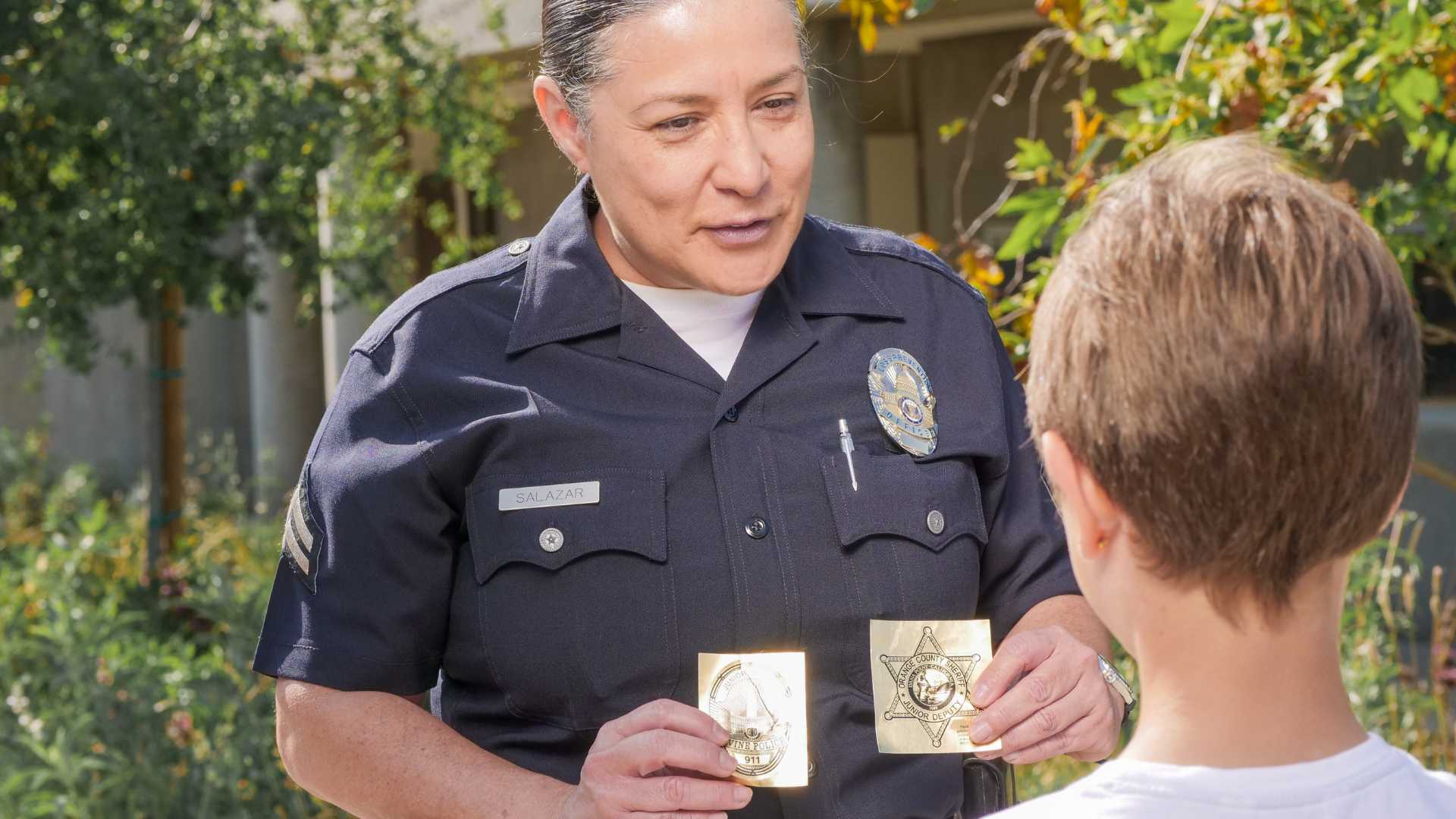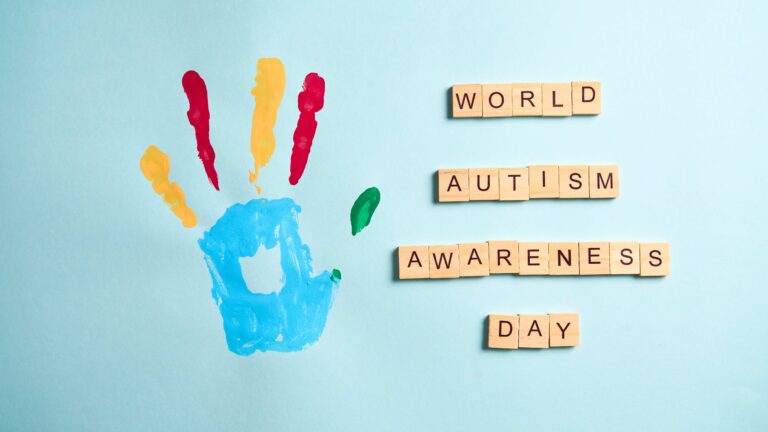Table of Contents
What should I teach my child with autism about police officers?
The topic of autism and the police require special attention from parents, caregivers, and educators of children with autism spectrum disorder (ASD). One of the most common questions that comes up is, “What should I teach my child with autism about police officers?”
Children and teenagers with ASD may have specific behaviors and reactions due to their sensory sensitivities, the way they process the world, and their preferences in communication and interaction. Although these differences do not pose a threat, a lack of understanding about autism can lead to police officers misinterpreting these behaviors as unusual or dangerous. This lack of knowledge can cause simple situations to escalate, putting the safety of individuals with autism at risk.
At ABA Centers of Rhode Island, we advocate for the safety, well-being, and inclusion of the neurodiverse community. We know that the relationship between autism and law enforcement is a crucial issue that we should not overlook. In this blog, we will explore how to improve these interactions and share five critical strategies for both parents and police officers. Our goal is for families and police officers to feel prepared to handle these encounters appropriately.
If the issue of autism and law enforcement concerns you, we are here to support you. At ABA Centers of Rhode Island, we offer a variety of services to support the autism community. Don’t hesitate to contact us; we are here to help.
Why Can the Interaction Between Autism and the Police Be Challenging?
Autism is a neurodevelopmental condition that affects the way a person behaves, interacts, and reacts. In a world designed primarily for neurotypical people, those within neurodiversity, such as those with autism spectrum disorder, often face additional challenges integrating into the community. For example, individuals with ASD may have difficulty understanding social cues, such as eye contact, facial expressions, or respect for personal space. When someone with autism does not respond to these cues as expected, it can lead to misunderstandings, especially in situations involving the police.
Another common aspect of people with ASD is repetitive behaviors and rigid routines, which provide comfort and predictability. According to the Autism Research Institute, approximately 40% of children with autism experience some anxiety disorder. Stimming and routines can help them cope with distressing situations. However, many people, including police officers, may misinterpret these behaviors, unaware of their purpose. Disrupting these routines can cause a great deal of stress, even leading to a meltdown.

In addition, sensory sensitivities are an essential factor. Bright lights, loud sounds, or crowded places can overwhelm a person with autism. This sensory overload can trigger reactions that some may perceive as unusual or disruptive, increasing the risk of misunderstandings in autism and police interactions.
Understanding the particularities of autism is critical to avoiding misunderstandings and ensuring that individuals handle these interactions more safely and empathetically.
Addressing Autism and Law Enforcement Encounters: Why Does it Matter?
As stated by the International Board for Credentialing and Continuing Education Standards (IBCCES), people with autism are five times more likely to end up in jail following an encounter with law enforcement compared to their neurotypical peers. This issue is due, in part, to behaviors such as stimming, flight reactions, or meltdowns that often arise during autism and law enforcement interactions. These behaviors, while harmless, can be misinterpreted, putting the safety of those on the spectrum at risk.
Encounters with police are stressful for anyone, but for individuals with autism, these moments can escalate quickly due to the unique challenges they face. Following and processing verbal instructions can be difficult, especially for those who are nonverbal. If police officers are unfamiliar with autism traits, they may interpret a lack of response as avoidance or non-compliance, increasing the risk of misunderstanding.

During high-stress situations, many people with autism resort to stimming behaviors such as hand waving or rocking to self-regulate. Unfortunately, police can misinterpret these movements as signs of drug use or mental issues, which could lead to a disproportionate response, such as the use of force, an arrest, or even the incarceration of an innocent person.
In addition, intense sensory stimuli, such as bright lights and sirens from police vehicles, can trigger sensory overload in individuals with autism. Sensory overloads can further exacerbate the situation, triggering fight-or-flight responses.
Understanding these challenges and raising awareness among law enforcement is crucial to improving interactions between autism and the police and avoiding tragic outcomes.
5 Strategies for Parents to Promote Safe Interactions
Caregivers of children with autism know that interactions between autism and law enforcement can be challenging and, in some cases, traumatic. However, with the following strategies, we can foster a safer understanding and avoid unfortunate outcomes.
- Teach identification skills: Your child must know how to identify themselves in necessary situations. The National Autistic Society offers a downloadable identification template for people with autism. Make sure it includes emergency contact information, communication preferences, sensory sensitivities, and calming strategies that may be helpful during an interaction with law enforcement.
- Visit local law enforcement offices: Although police officers intend to do their job, sometimes misunderstandings can occur. A great way to prevent them is to visit the local police station and introduce your child to the officers. This way, the officers can become familiar with your child and be prepared in case of a future encounter. In addition, these visits help your child become aware of police uniforms, faces, and vehicles, reducing anxiety and educating the community about autism and the police.
- Practice with role-playing: Role-playing to recreate possible police encounters can be a valuable tool. These simulations allow your child to become familiar with what might happen, what questions police officers might ask, and what type of behavior they expect. Practicing these interactions can make them feel more prepared and confident.
- Use visual supports: Verbal instructions can be complex for many children with autism to understand. Visual supports, such as flashcards or pictures, can be much more effective in explaining important concepts. Create cards that demonstrate who police officers are, what their role is, and what are their expectations during an encounter. This tool will help facilitate safer interactions between autism and the police.
- Create an emergency plan: It is critical to have an emergency plan that includes how to act in situations involving law enforcement. Make sure your child understands basic safety rules and knows what to do in the event of an emergency. An emergency plan can help interactions with officers go more smoothly and safely.
5 Strategies for Law Enforcement Officers to Promote Inclusive Interactions
Just as parents and caregivers teach their children with autism how to interact with law enforcement, it is critical that officers also prepare for these interactions, respecting neurodiverse needs and promoting safety and inclusion.

- Educate yourself about autism: Specialized programs exist that train law enforcement officers to recognize and address autism. These trainings help police officers communicate effectively with people on the spectrum and avoid misunderstandings that could jeopardize their safety. Initiatives such as D.O.P.E The Movement offer valuable resources that help officers improve the safety and effectiveness of autism-police interactions. Learning about best practices is an essential step in overcoming challenges that may arise.
- Approach in a calm manner: Calm is vital when interacting with someone with autism. Speaking clearly, avoiding sudden movements or loud noises, and maintaining a non-threatening attitude can prevent the person from feeling overwhelmed and having adverse reactions.
- Use precise language: Simple and direct communication is essential. Avoid using complex instructions, metaphors, or sarcasm. People with autism may need more time to process what you say to them, so speaking clearly helps the interaction go more smoothly.
- Be patient: Give the person with autism time to process the information and respond. Don’t rush the conversation or assume that silence is a sign of disobedience. Patience can make a big difference in these situations.
- Observe: Pay attention to body language and behavior. Each person with autism is unique, and their responses may vary. Based on what you observe, adapt your methodology and interaction, and if necessary, use alternative communication methods such as gestures or written instructions.
ABA Therapy for Autism and Law Enforcement Interactions Support
Applied behavior analysis, or ABA therapy, is the gold standard for autism therapy. Through ABA, children and teenagers with autism can learn social, communication, and emotional management skills that help them better understand expectations in situations with authority. In ABA therapy sessions, individuals can learn appropriate responses to verbal instructions, control impulsive behaviors, and handle stressful everyday situations, such as encounters with law enforcement.
In addition, in ABA therapy, parents and caregivers can participate in creating personalized emergency plans and practicing law enforcement interaction scenarios. ABA therapy contributes to promoting safer encounters between autism and law enforcement.
ABA Centers of Rhode Island Advocates for Autism Safety
At ABA Centers of Rhode Island, we understand how crucial it is to promote safety and inclusion for neurodiverse individuals. In our blogs, we address essential topics about autism and the challenges that affect the daily lives of those on the spectrum and their families.
When it comes to autism and the police, we know that it is vital for parents and caregivers to take preventative measures to avoid misunderstandings and ensure safer interactions. While these encounters are part of everyday life, for individuals with autism, they can be incredibly complex. ABA therapy is an essential methodology to help your child develop skills to better navigate these situations, with the support of committed therapists who will work on your child´s growth and autonomy.
If you are looking for developmental support for your child, we are here to help. Call us at (855) 922-4148 to start ABA therapy and take that step towards a more secure future full of opportunities.








